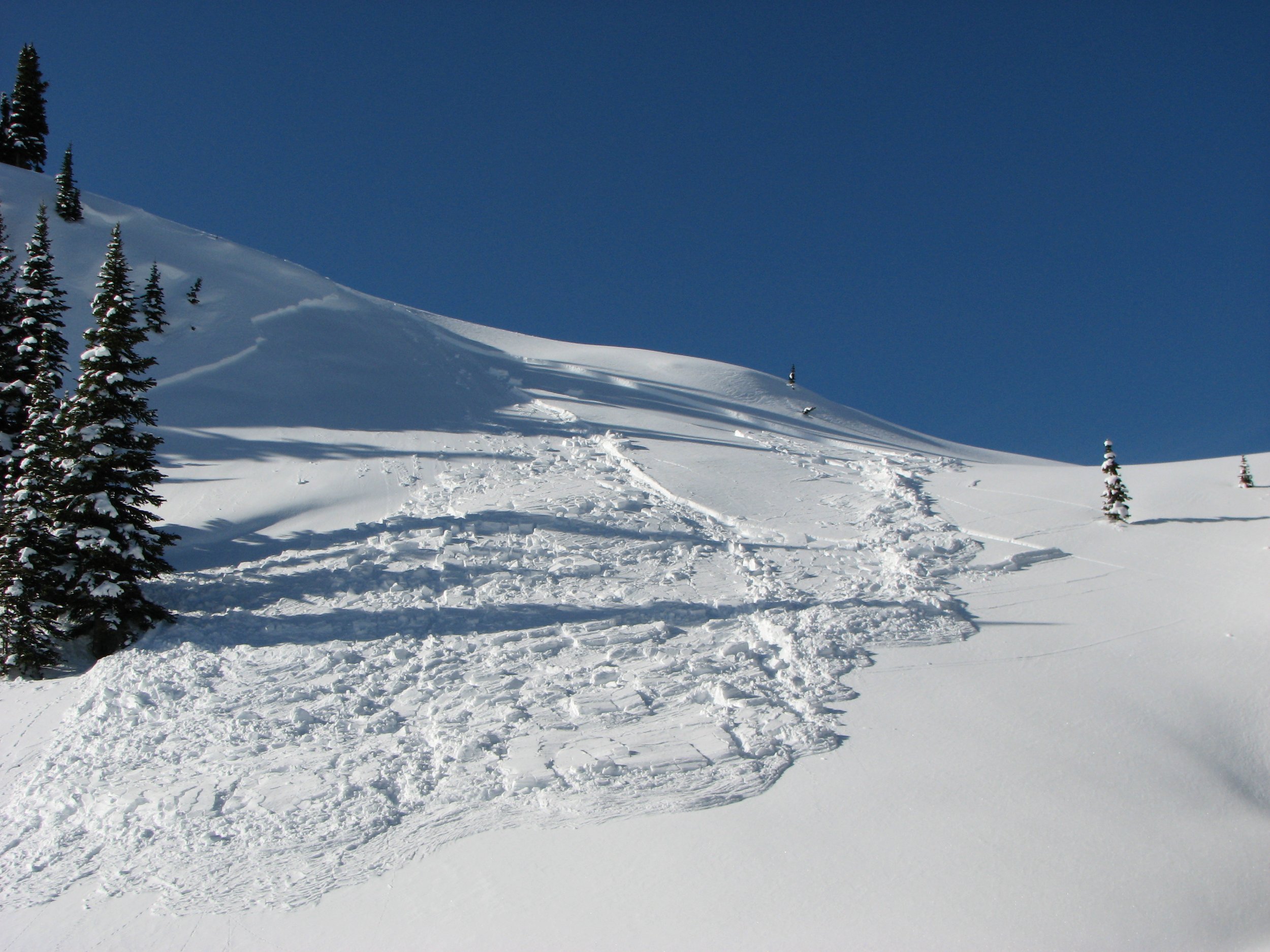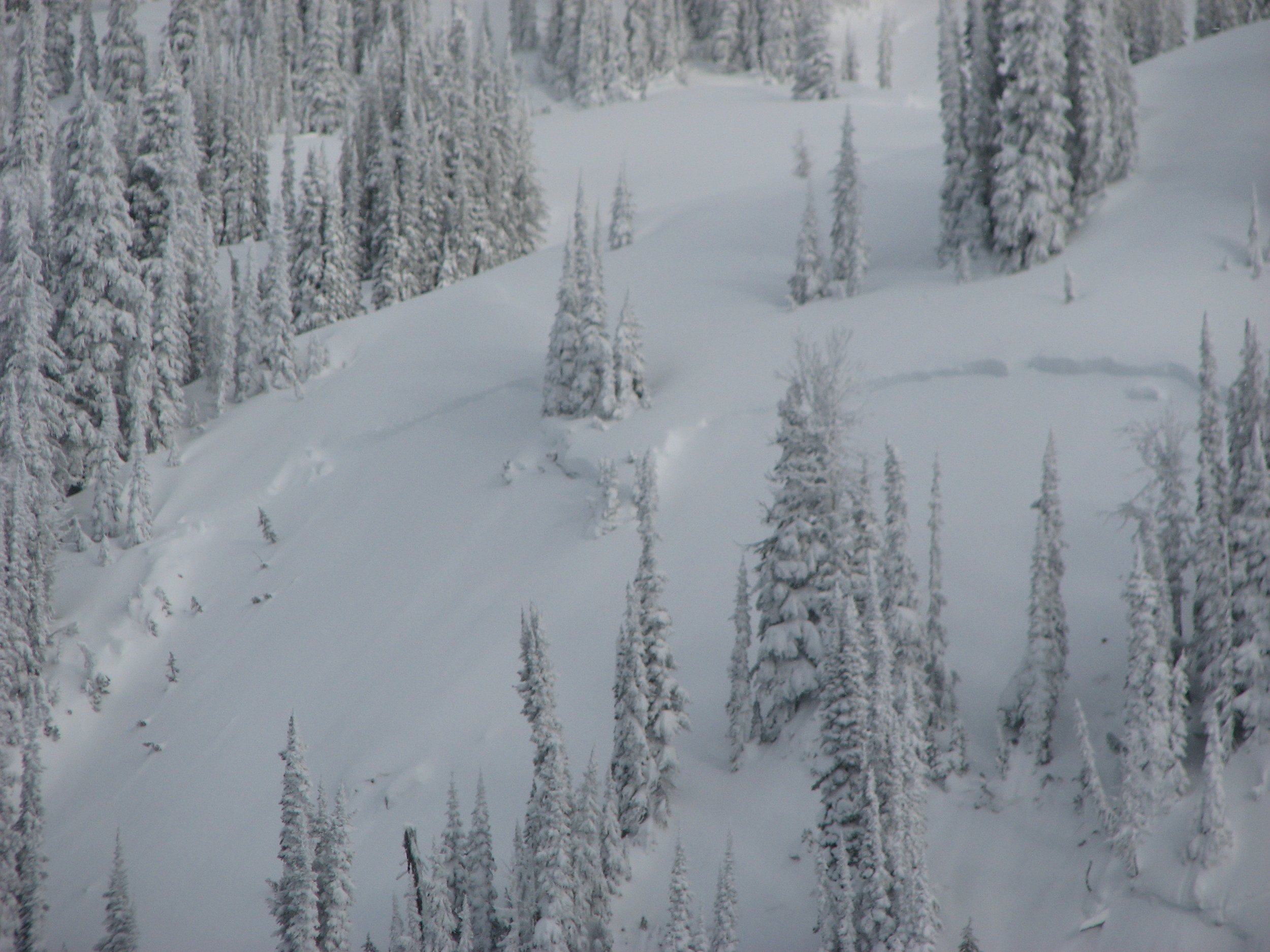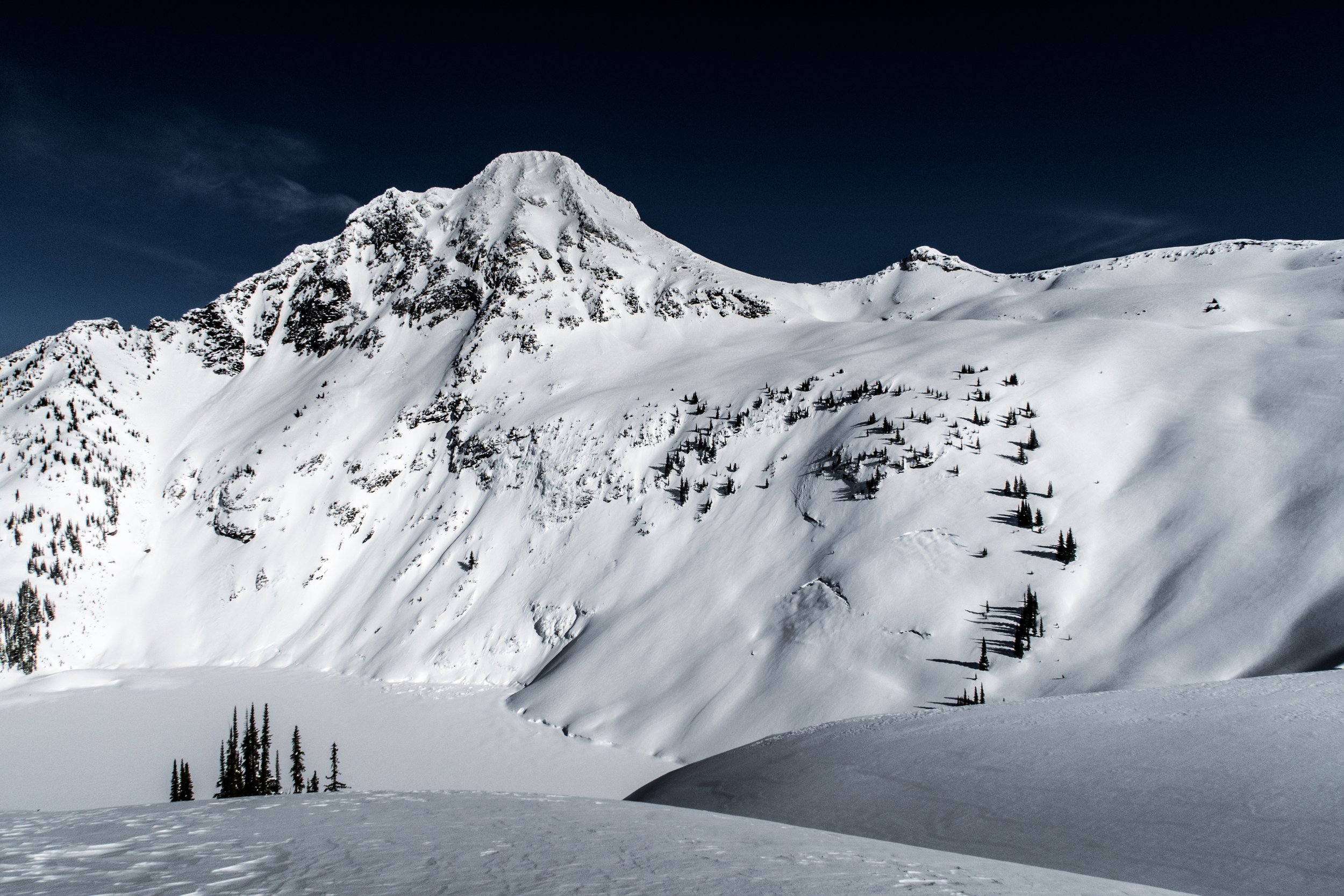A Brief Introduction to Travelling in Avalanche Terrain
Photo by Saul Greenberg
However you choose to get out there, adventures in the winter mountains can be incredibly rewarding—but they come with risks. Whenever you’re travelling on snow covered slopes, avoiding avalanches should be on your mind.
How big is avalanche terrain?
Recognizing avalanche terrain is an essential part of staying safe as you travel in the winter. A slope that could produce an avalanche may not be as large as you might expect. A slope as small as 10 m x 10 m (about the size of a tennis court) could produce an avalanche dangerous enough to hurt a person.
How steep is avalanche terrain?
Most avalanches happen on slopes that are between 30-45 degrees. That’s about the same steepness as a black diamond or double black diamond slope at a ski resort. Remember that steep slopes that could avalanche may be above you as well as being the slope you’re travelling on. There are a few ways to measure how steep a slope is, but the easiest is using an inclinometer.
How much snow is needed for an avalanche to occur?
As soon as there is enough snow to smoothly cover the ground surface, avalanches should be on your radar. For many areas, this could be around 20-50 cm of snow, but it will vary depending on how rough the ground is.
Where on the mountain do avalanches happen?
Avalanches don’t always happen where you might expect. It might be easy to imagine that avalanches only happen in the alpine, but different avalanche problems can cause avalanches in a variety of places. In the avalanche forecast, we divide the mountain into elevation bands (alpine, treeline, and below treeline) and, depending on the avalanche problems, avalanches can happen in any of those bands.
The shape of the terrain also affects how likely you are to trigger an avalanche. Slopes where the steepness changes abruptly are prime triggering spots. Cornices are also areas to avoid, both from above and below. Cornices are shelves on snow that the wind forms on ridges. They can be very large and fragile, weighing several tonnes and collapsing with little warning.
What’s a terrain trap and why should we avoid them?
A terrain trap is any place where the shape of the terrain could worsen the consequences of an avalanche. They might be cliffs that you could be swept over, areas where you could be buried more deeply in an avalanche (like gullies or flat areas under steep slopes), and places where an avalanche could push you into obstacles, like trees or rocks.
Where should I ride?
If you’re in avalanche terrain, there is no single location that will always be safe to ride, whatever the conditions. Sometimes, the trees are safe havens and sometimes, they’re not. Sometimes, you can avoid the lee sides of slopes to dodge windslabs and other times, reverse loading means they are lurking in unexpected places. Every day is different and so the best way to find a safe spot to recreate is by reading your avalanche forecast closely. That will tell you what problems we’re concerned about and where they can be found.
Top Tip:
Don’t forget, planning for avalanche terrain means considering what terrain is above your route as well as the terrain you plan to travel on. Avoid routes with overhead hazard when avalanche conditions are dangerous. FATMAP can help you to identify avalanche hazard above you and the avalanche forecast at www.avalanche.ca will help you to understand conditions.
You can also help minimize your risk by considering:
How serious would the consequences of an avalanche likely be?
Are you on a large slope capable of producing a large avalanche? Are you riding in an area where an avalanche might push you into a terrain trap?
Who else is around you?
Are there other people recreating on the slope? Avoid slopes where other groups are recreating and be aware of groups above or below you.
What is the weather?
Changes in weather change the avalanche danger. Be alert for weather that differs from the forecasted conditions or changes throughout the day.
How good are your travel habits?
Are you taking care to travel one at a time on exposed slopes? Is your group communication good? Does everyone have the training, gear, and practise they need to travel safely?
Avalanche Canada
This post was written by Avalanche Canada. More info at: www.avalanche.ca








